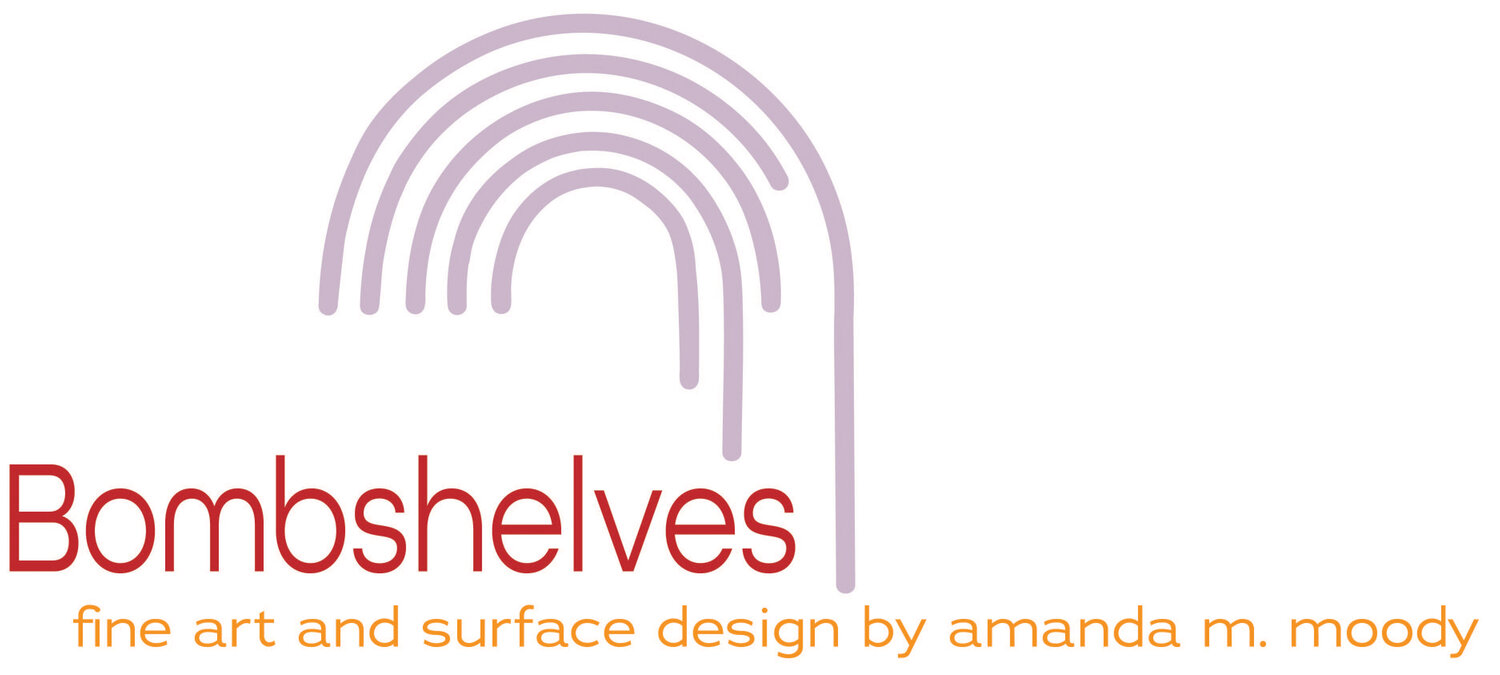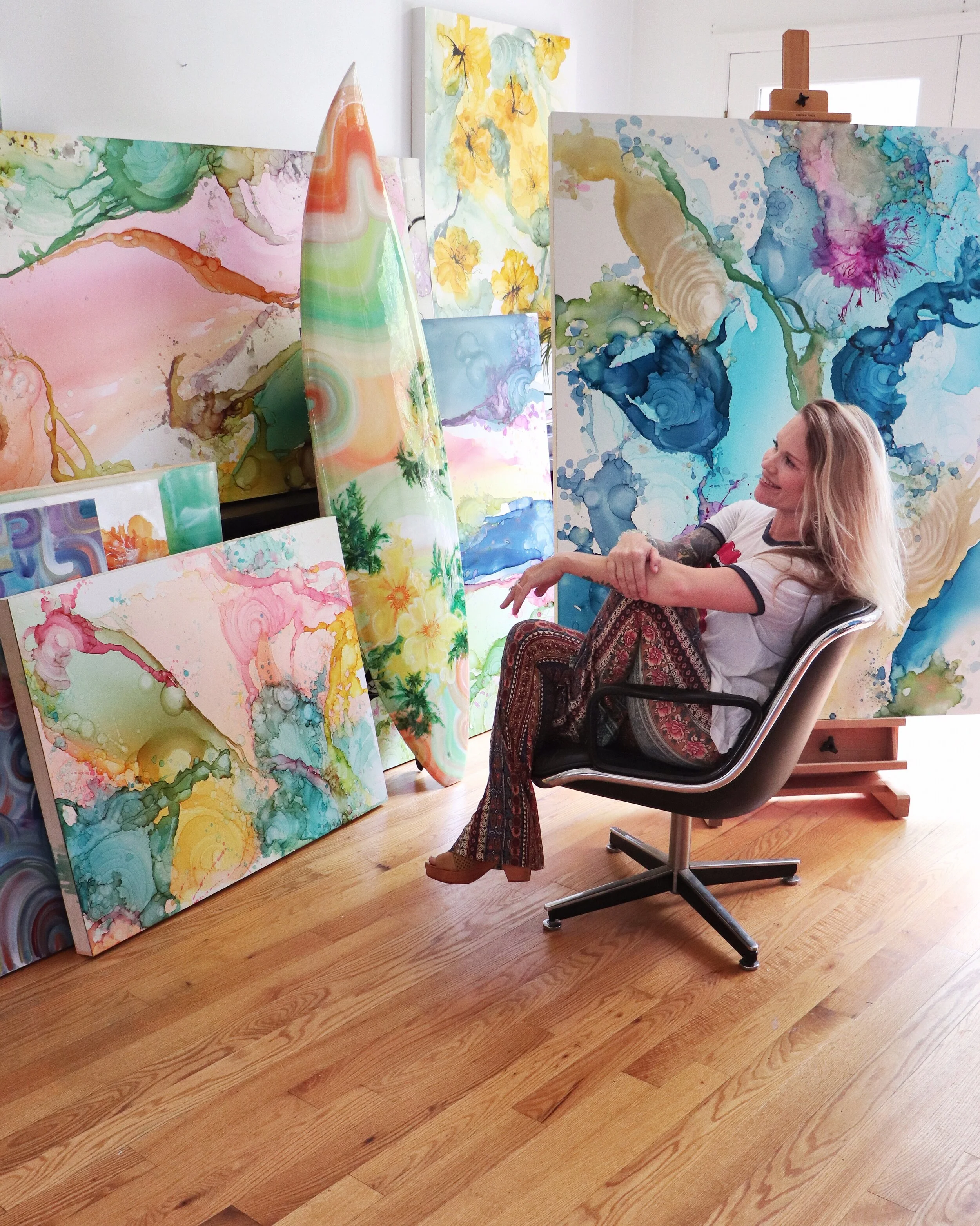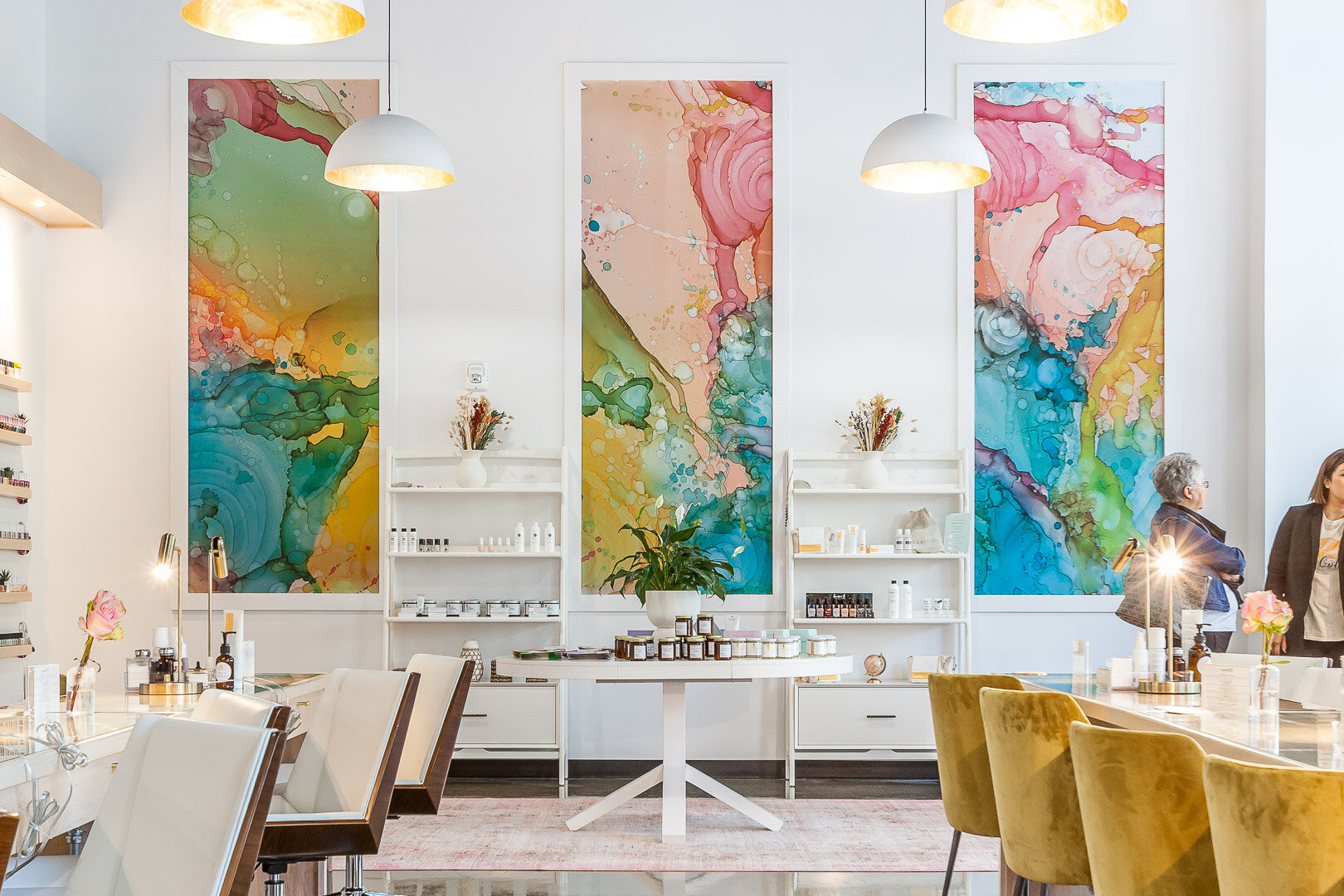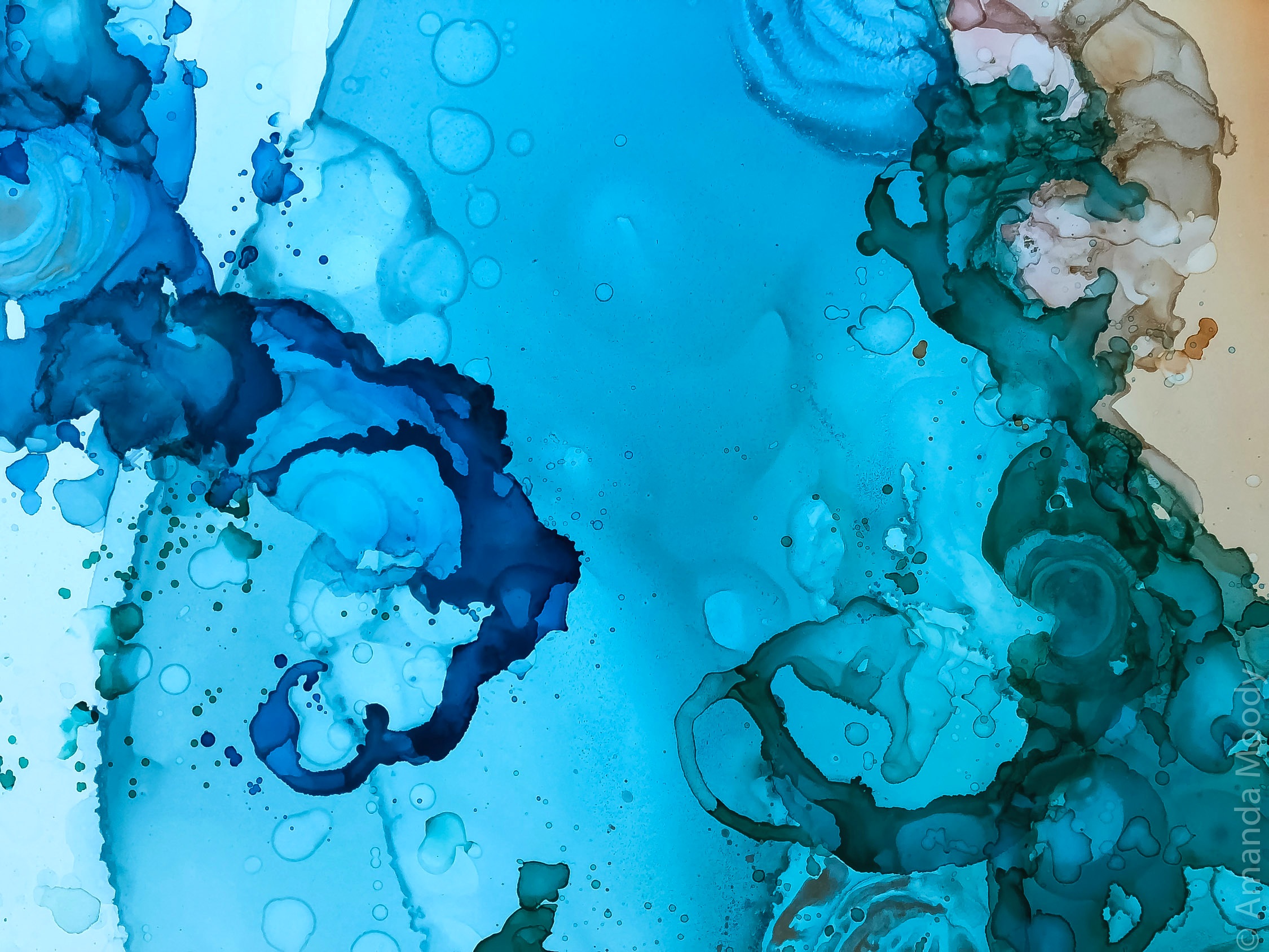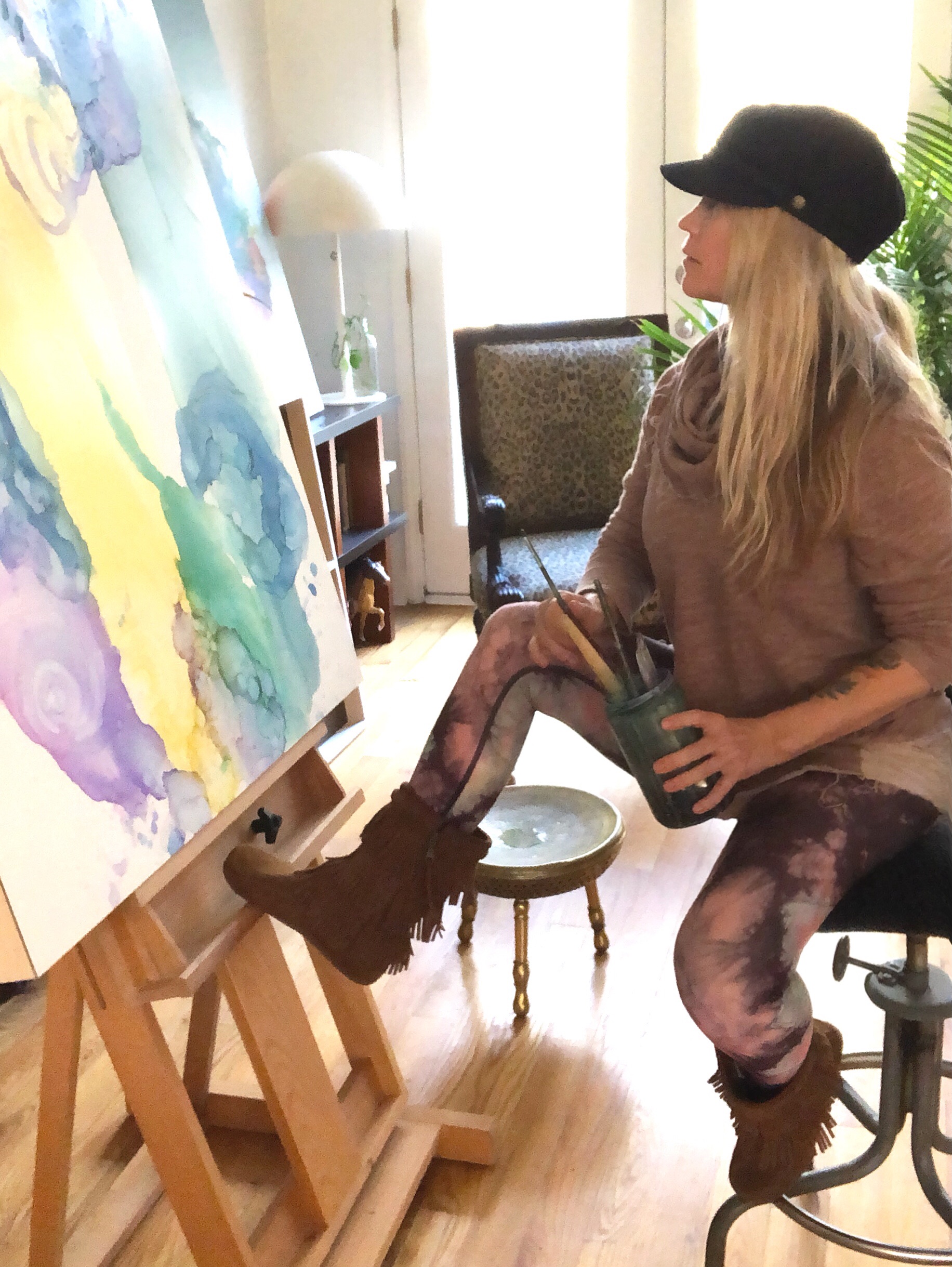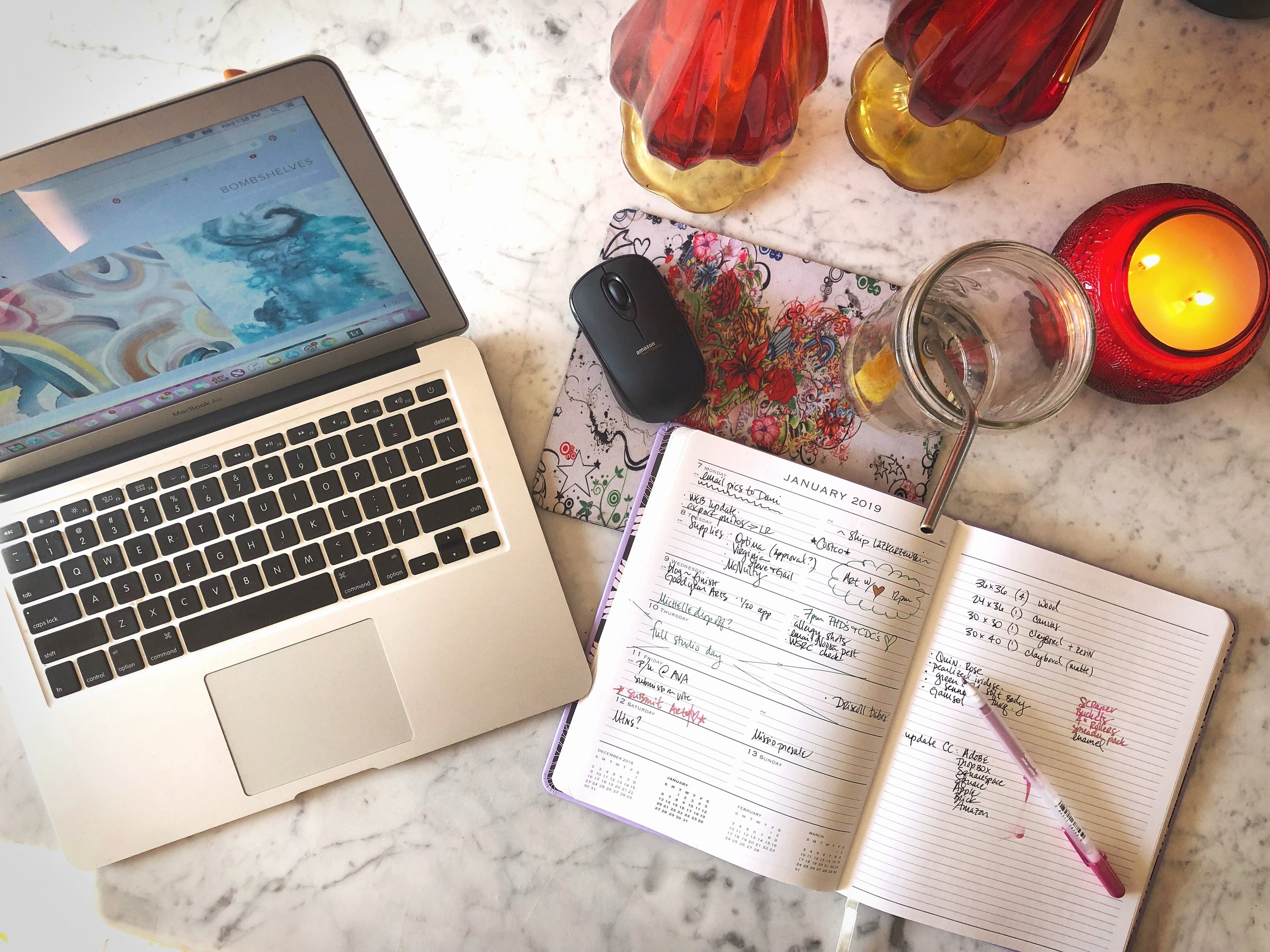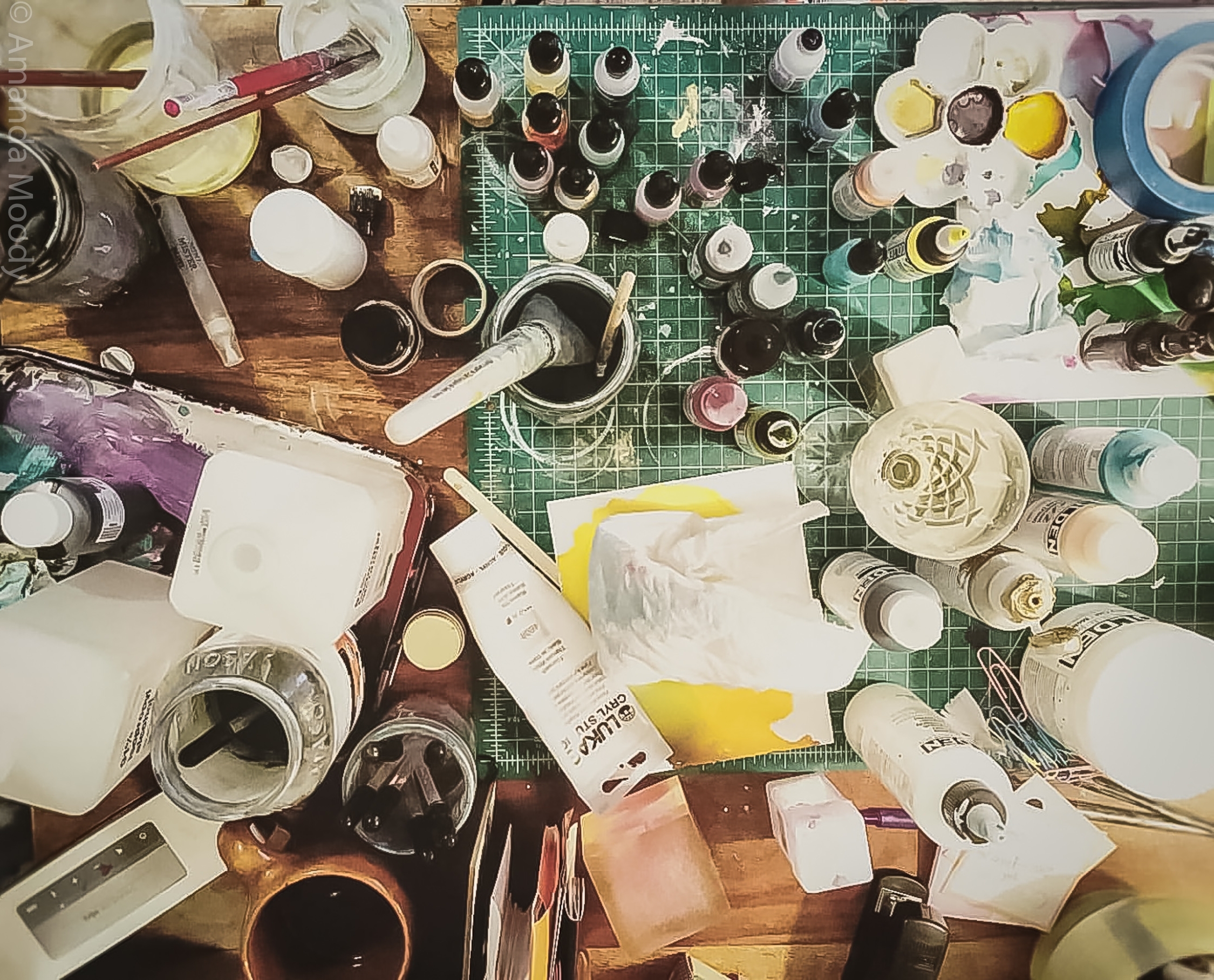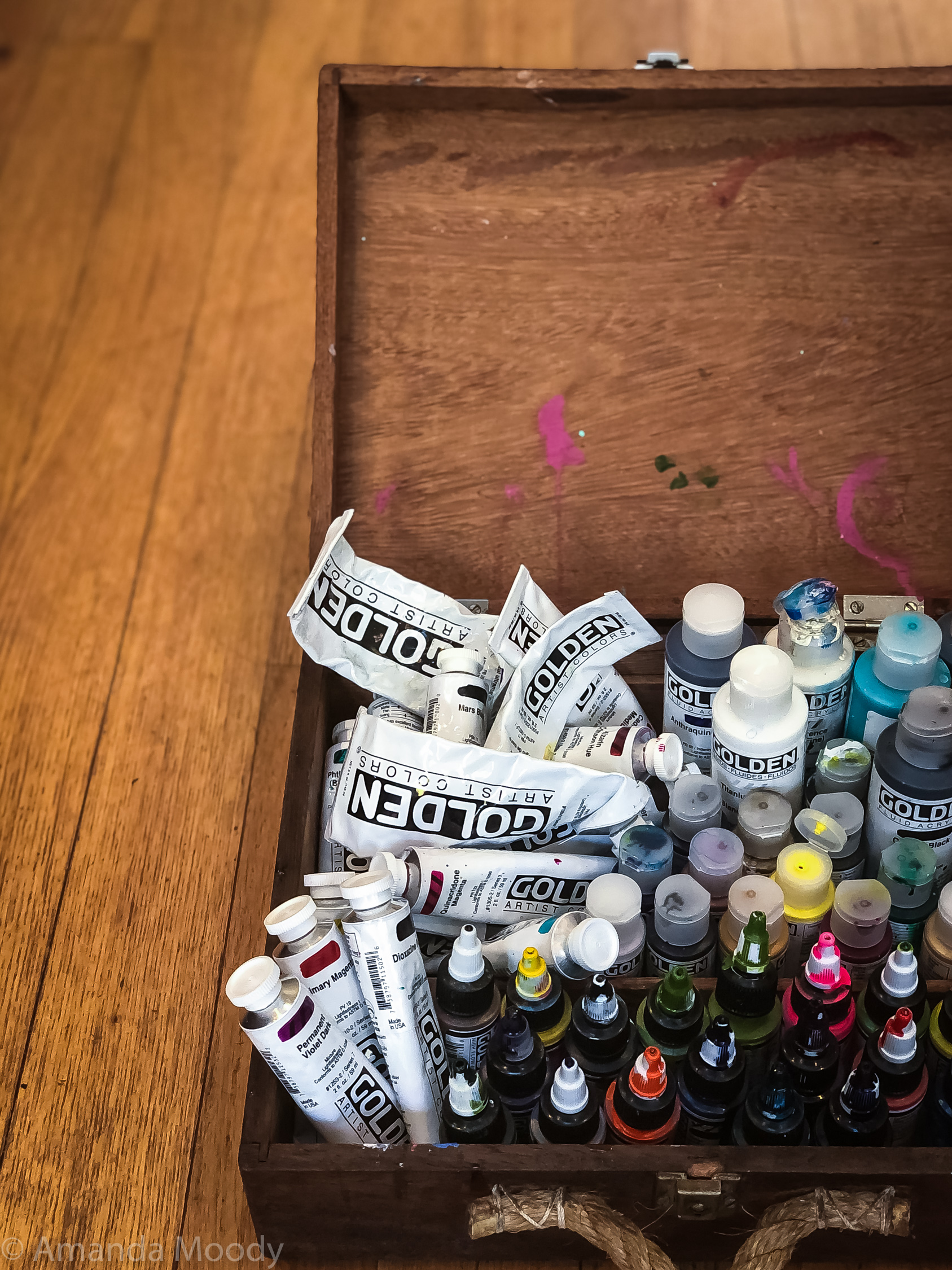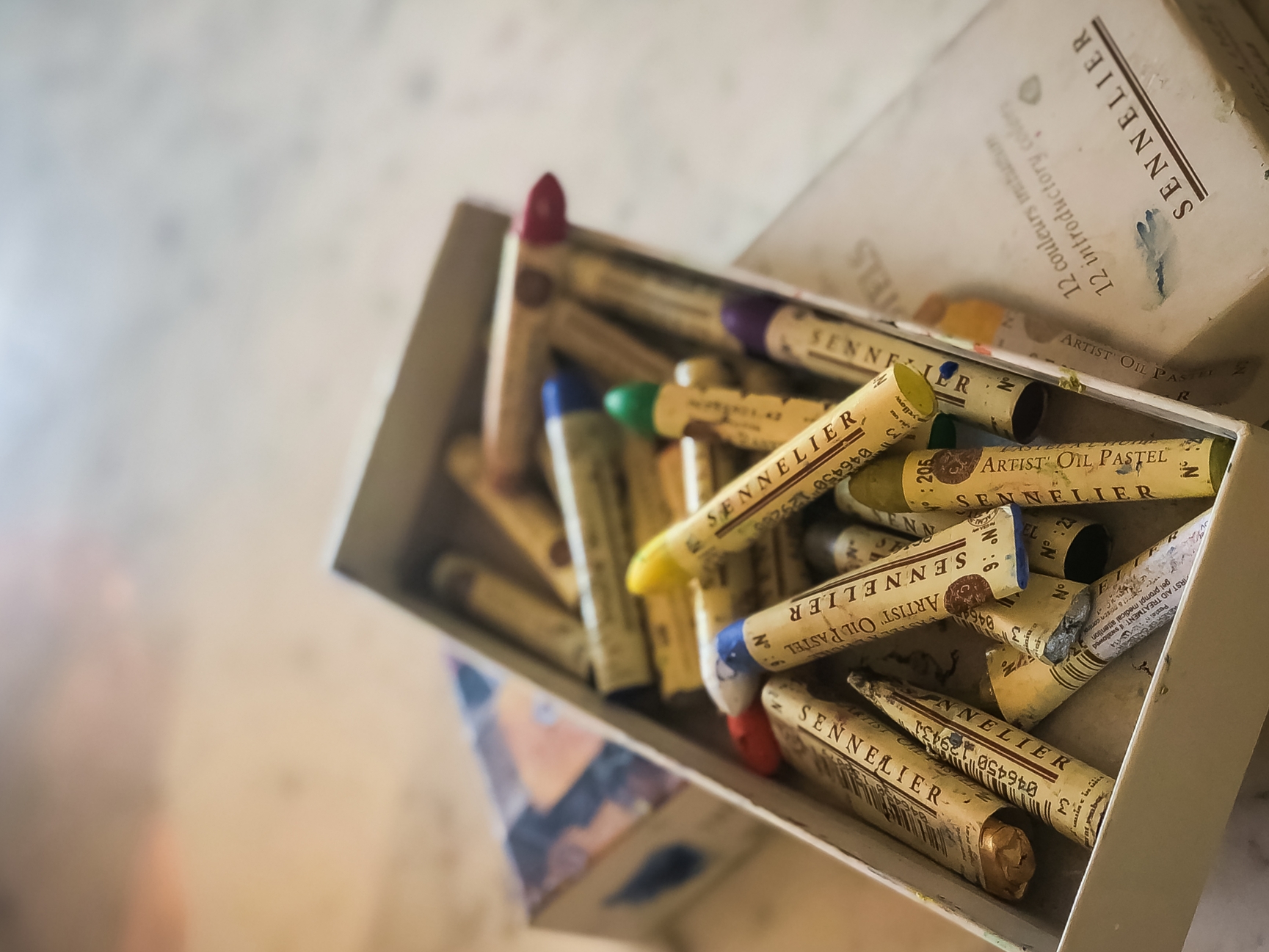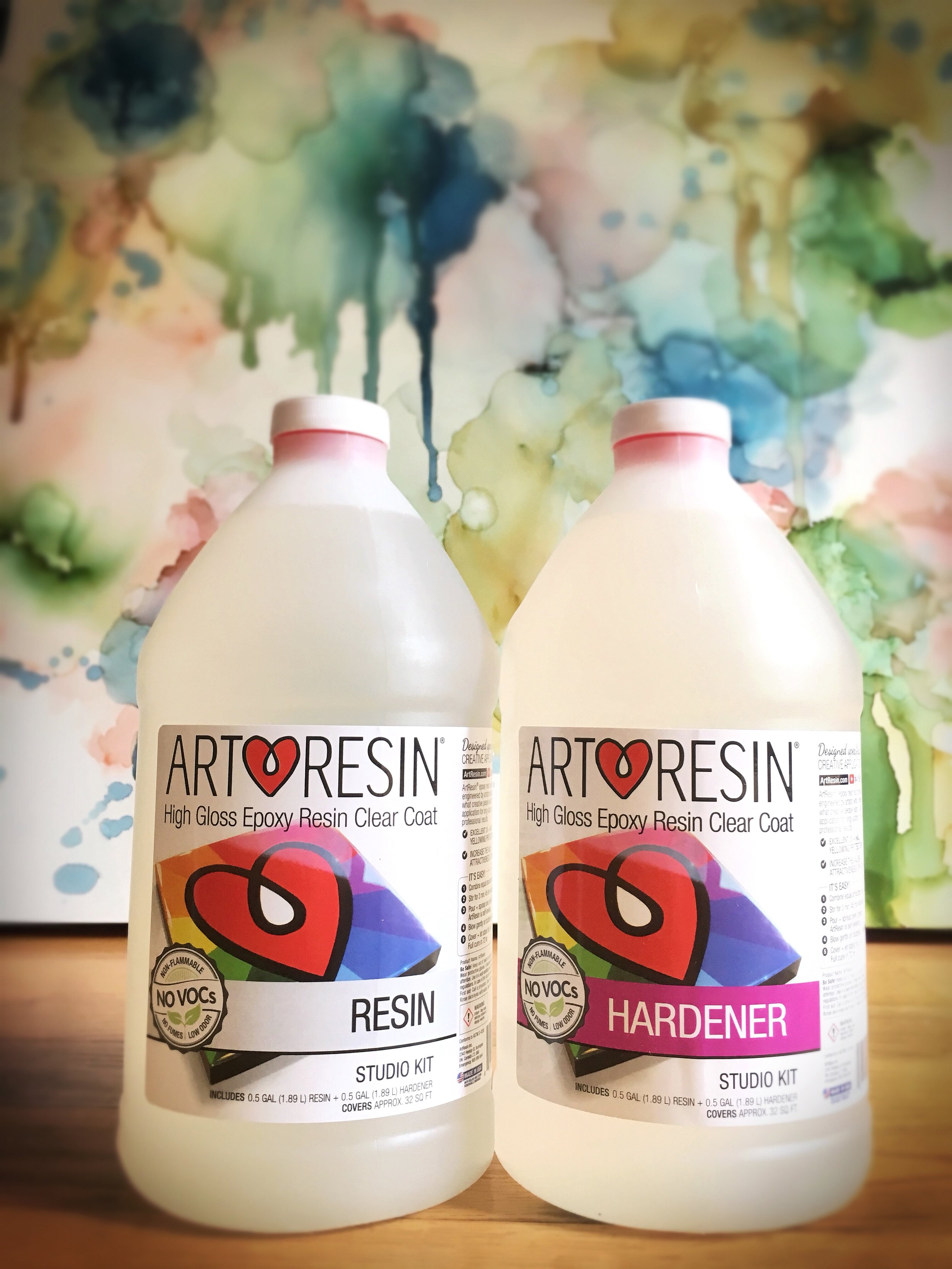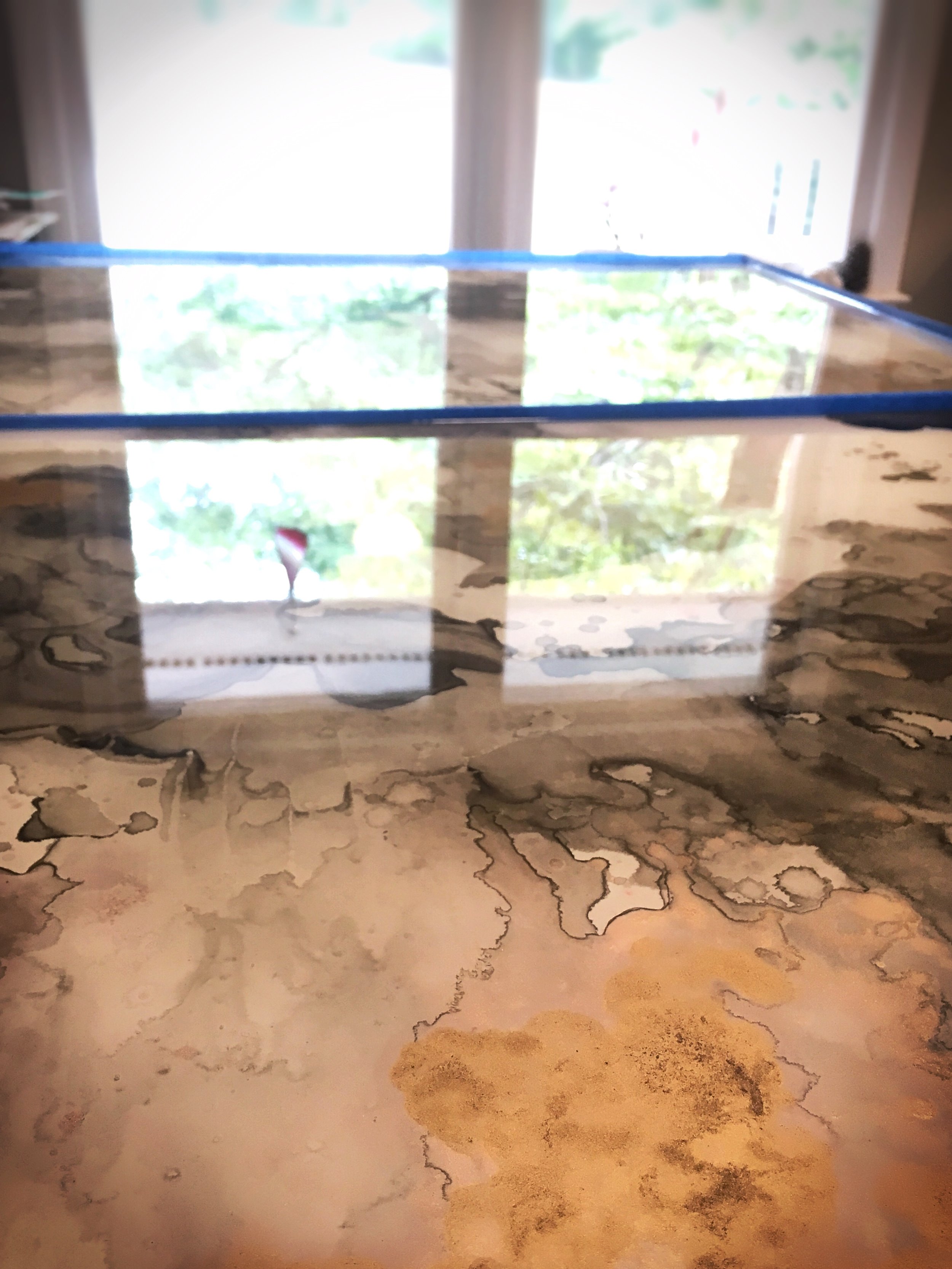My favorites, QC Exclusive, have recently been doing a thought-provoking series on local Charlotteans and how to navigate the issues we are all facing today with the Coronavirus pandemic. When they approached me and asked me to contribute, I was so honored to be included once again in their quintessentially beautiful and thoughtfully curated publication. QC Exclusive, thank you, as always, for your support and including me.
Words by Charlotte artist Amanda Moody, of Bombshelves
Notes from the QCE Team: In moments of changes, disruption, and confusion, we are always moved to see the connections, big and small, amongst and between people. In this series, we will feature the thoughts of Charlotteans: How they’re navigating these times, what’s hard, what’s easy, and what’s next in their own words.
Charlotte artist Amanda Moody is an endlessly talented abstract fine artist who creates bold, colorful, fluid mixed media textural and resin art, along with custom textile and wallpaper. We are honored to share her thoughts below.
“How can a person move forward, while at the same time, seemingly at a standstill? Even though our worlds have come to this abrupt halt in so many ways because of Covid-19, life still goes on… it must. But what exactly will that look like? It is difficult to think of any facet of life that has not changed in some way. But truthfully, even with all the unknowns, I do have hope that whatever life is going to look like on the other side is going to be beautiful. It has to be… the way humans have been living in excess and abusing our planet just was not sustainable. “Bigger, Better, Faster, More” must now be a way of the past.
Connectivity
I have always been a homebody by nature. I always work from my home studio instead of the city. Yet I am still feeling the major effects of the quarantine and of the uncertainties that lie before us all. There are definitely days where I feel that incoming wave of panic about one of the elements of modern life that are currently the most vulnerable…be it health or environment related, finance or business related, or simple lifestyle and routine stir-craziness related.
The fact of the matter is, there is little that we can do as individuals to change that there is a global pandemic. There is probably not one person on the planet at this moment not affected in some way by this virus. That’s quite profound, if you think about it, and is proof of our connectivity. We can each do our individual part in staying home and practicing proper protocols, but ultimately as civilians, we have to have patience and wait it all out until our environment is “safe” again, whatever that may look like.
Learn To Let Go
Life is now teaching us to really LET GO in so many ways and not focus on the outcome. Contentedness is highly underrated, in my opinion. One of my favorite quotes of all time is by Eckhart Tolle: “Being at ease with not knowing is crucial for the answers to come to you.”
It is being satisfied with NOT being able to see the end of the road that allows for a healthy and peaceful state of mind. At this moment, and really every moment, I’m not supposed to know where I will be in one day, one week, one year… you get my drift. Finding joy in each day adds to my contentedness. However, please don’t mistake it for complacency. There is a huge difference. I do have goals that I want to achieve both short term and long term; Now I just have the blessing of being able to approach them with a softer agenda.
Be Grateful
What tangible, active things do I practice to find joy, and stay sane and positive? First, and always first, I find gratitude in small things. I have never been a complainer… it’s just not in my bones to focus on the negative if at all possible. There is always someone out there who would trade places with me in a heartbeat. Gratitude is such a trite word, used by every pseudo-“woke” person on the internet these days. But practicing it truly works!
Whenever I feel the worry creeping up on me (and it does for all of us), I find one small thing to be grateful for and focus intentionally on that. This brings me back to earth, and it always tends to multiply. I never take for granted that I am the luckiest girl in the world that I get to support myself and my family by working from my home. I get to be creative daily and able to keep my mind sharp that way. With a shift in business pace lately, instead of letting these sudden changes cause me any anxiety, I take a deep breath. I hold on to my faith in the universe, taking the time to try something new, or fine-tuning something that was further down my priority list prior to this Virus Age.
Embracing The Lifestyle
Currently, I am continuing to hone my photography and digital art skills for future textile and wallpaper design patterns, exploring new methods and mediums in painting as always, and staying connected with those both in the industry and personally whom I respect and trust. On particularly cagey days, I will drag my easel outside to shake off any mental dust, so to speak. Business aside, my family and I have been relishing the reformation of living on less in a much more edited lifestyle. We are cooking up a storm in the kitchen and making time for plenty of sunshine and exercise. We’re even growing our own food. There’s actually no place or better time of year for a quarantine than spring in my Carolinas!
Dare I say that once the chips fall where they may, there will be things about this era of our lives that we will miss. I am choosing to embrace all of it while I am able.”
